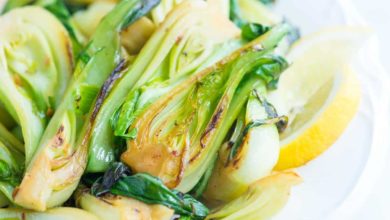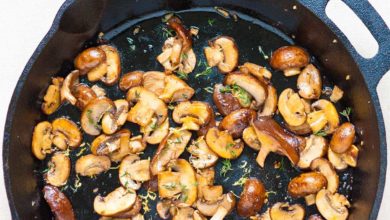Homemade tahini is so easy to make. Our quick recipe makes tahini that tastes much better than anything you can buy at the store.
Watch the video
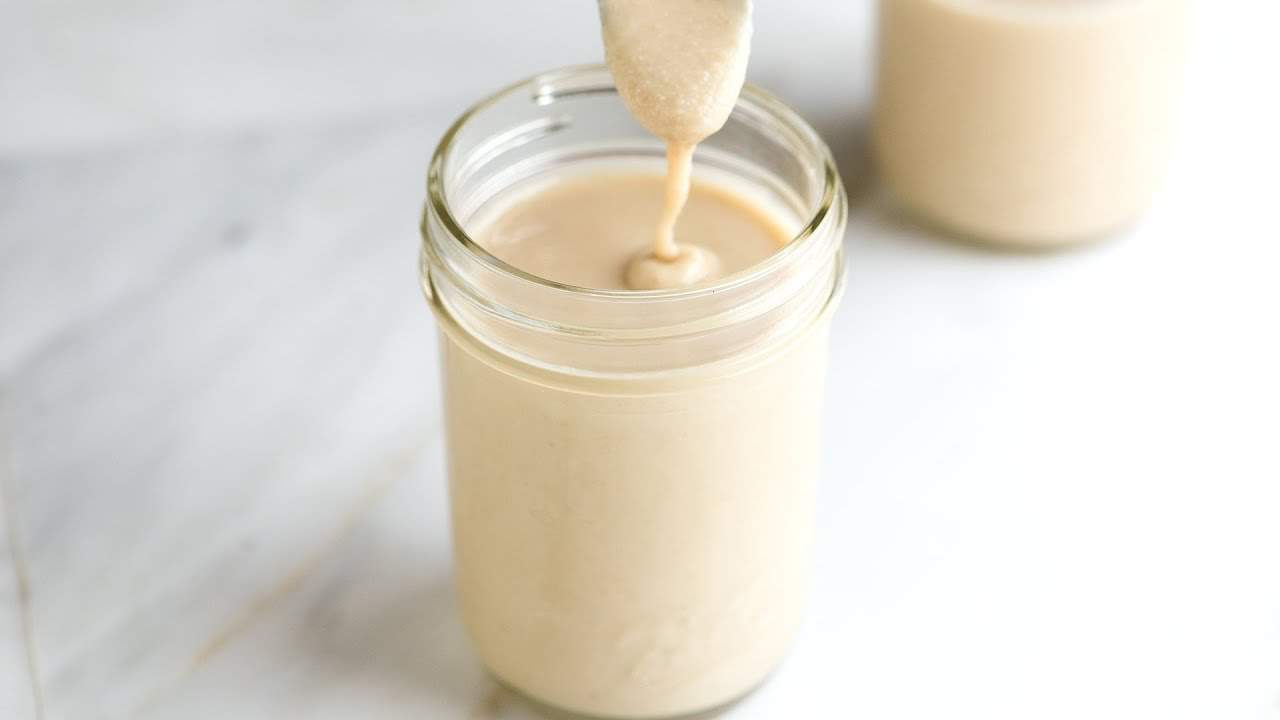
Tahini is a paste made from sesame seeds. It is a staple in many cuisines, especially in the Mediterranean and the Middle East. It’s vegan, gluten-free, tastes nutty, and is simple to make.
Store-bought jars of tahini can be expensive, and our homemade tahini tastes better. Use tahini to make hummus, salad dressings, sauces, and more!
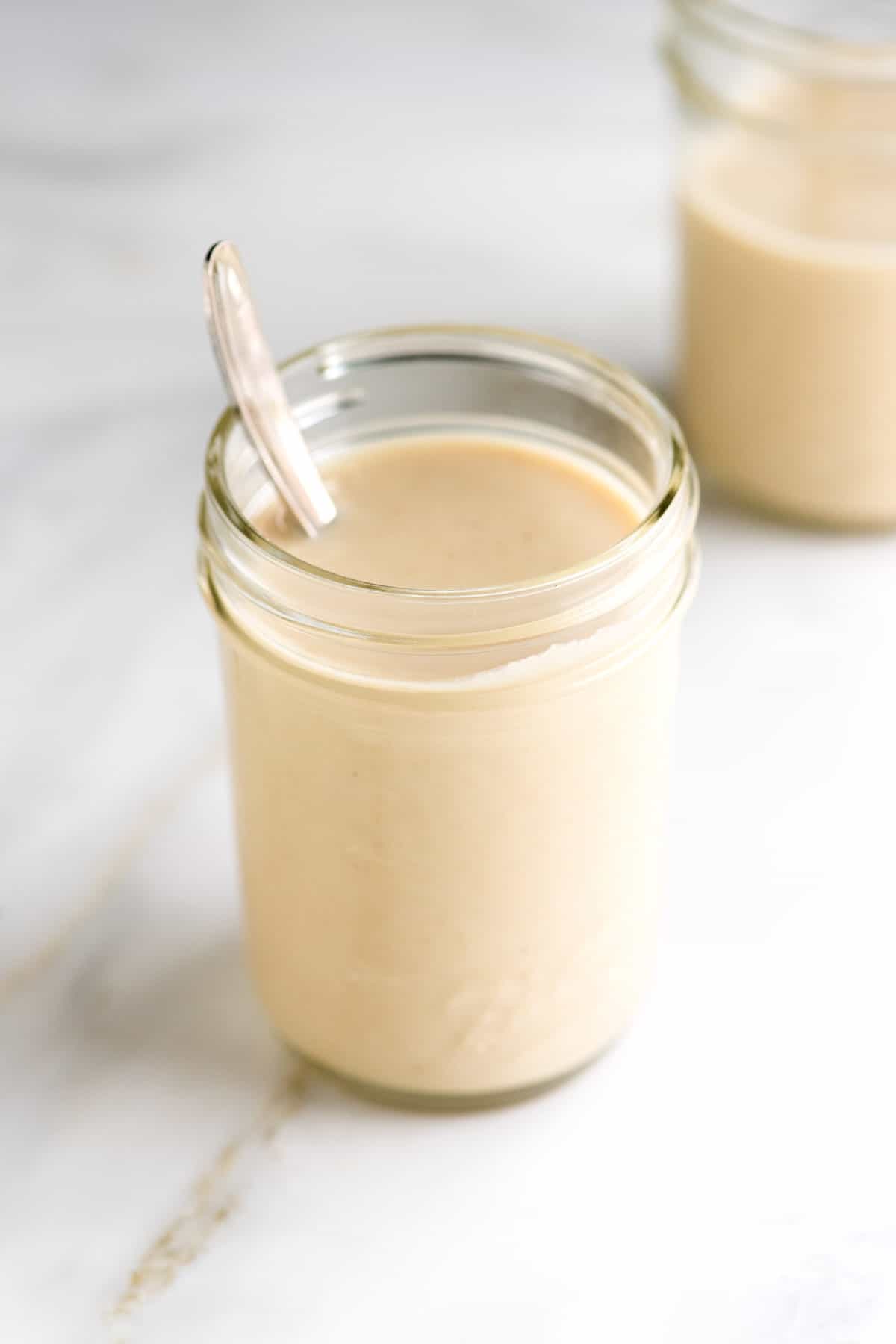
Tahini ingredients
You only need THREE ingredients to make tahini.
- Sesame seeds — We use hulled seeds (pictured below on the left) and toast them in a dry skillet to bring out their natural nuttiness.
- Oil — To help the tahini become a creamy smooth paste, we add a few tablespoons of neutral-flavored oil. Try avocado, extra-virgin, olive, vegetable, and grape seed oil. Sesame oil (not toasted sesame oil) also works.
- Salt is optional, but I always use it. It just makes the tahini taste better.
You can also make tahini with sprouted and black sesame seeds. Unhulled sesame seeds, pictured below on the right, are much darker and still have their hull or outer shell intact. Tahini made from unhulled sesame seeds tastes more bitter and isn’t as smooth as when made from hulled seeds.
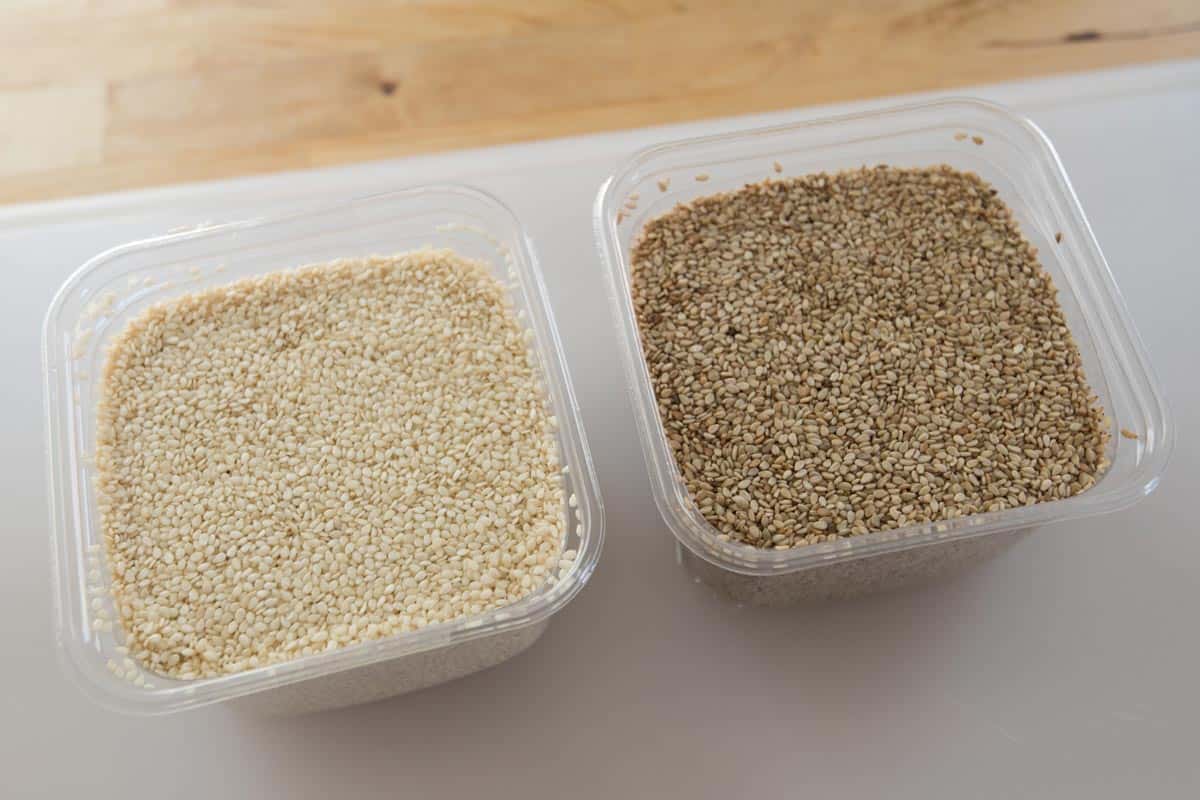
How to make tahini in minutes
Tahini is very, very simple to make. If you have ever made nut butter like peanut butter or almond butter, it is basically the same process: Grind sesame seeds in a food processor with a bit of oil until smooth.
Step 1: Toast the sesame seeds. I love toasting the sesame seeds before making tahini. It tastes better. I toast them in a dry skillet on the stovetop. Sesame seeds are tiny and can burn quickly. Toast them over medium-low heat, stirring often, until they take on a light golden color.
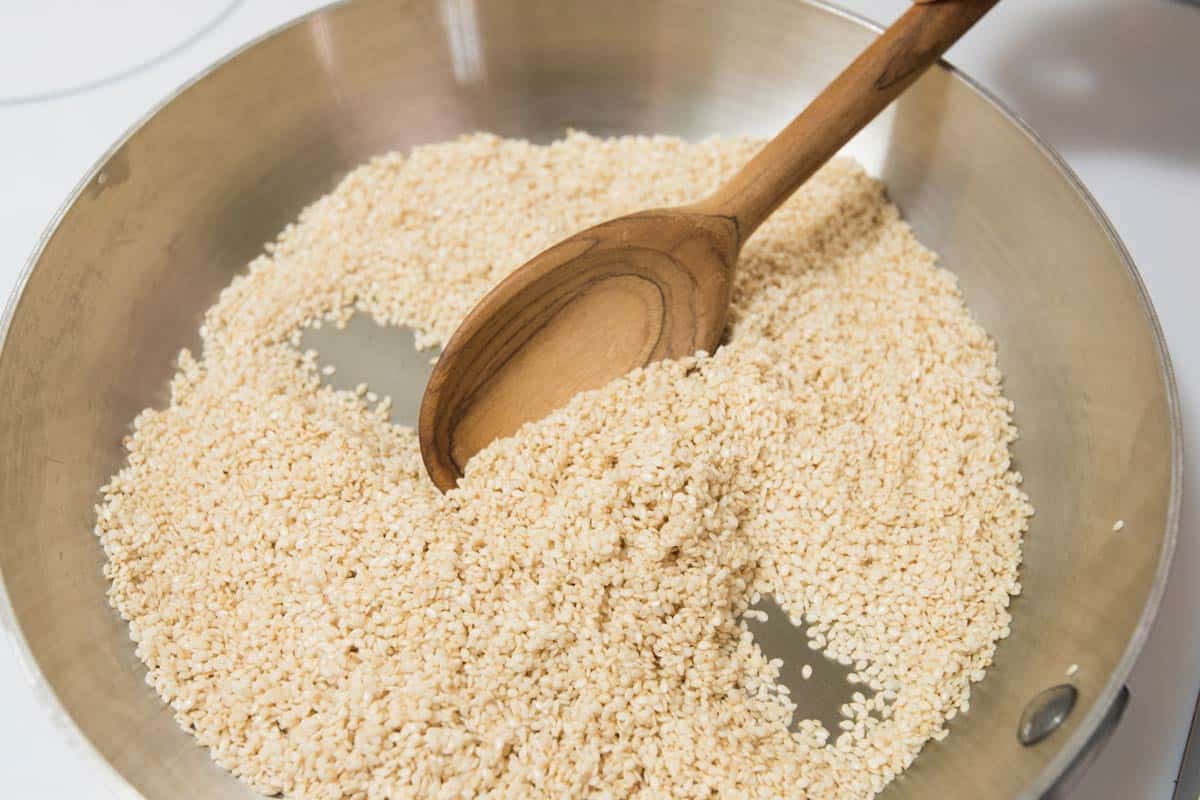
Step 2: Process the sesame seeds until crumbly. Throw the toasted sesame seeds into the bowl of a food processor, shut the lid, and then process until a crumbly paste begins to form. We have a 10-cup Magimix food processor. It is powerful, which helps when making tahini. Most food processors on the market today will do the trick. Blenders are hit and miss — read through our comment section for tips from other readers who used a blender to make this recipe.
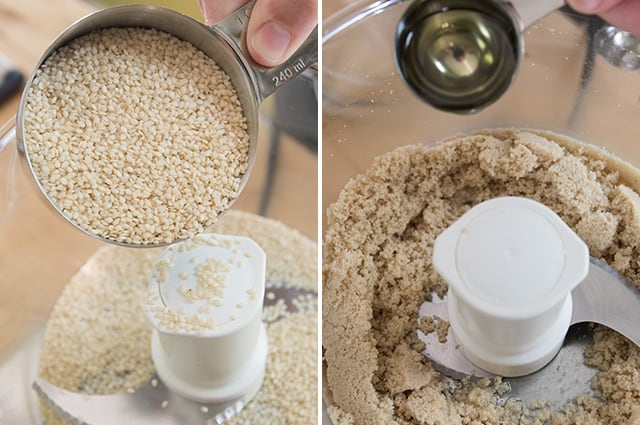
Step 3: Add oil and process into a smooth cream. We add a few tablespoons of neutral-flavored oil to help the tahini turn into an extra smooth, drippy paste. You can eliminate some of the oil if you would like, but the tahini won’t be as smooth or pourable. We’ve found that 3 to 4 tablespoons of oil does the trick to reach a similar consistency as store-bought.
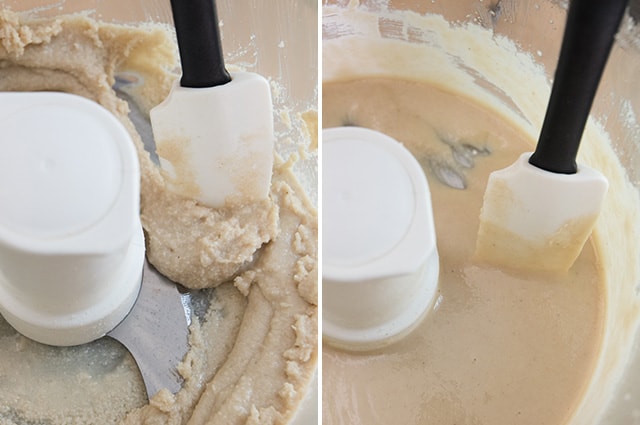
After more processing, a few stops to scrape the bottom and sides of the bowl, and a little more processing after that, the tahini is done. Extra smooth and ready to use in whatever recipe you like.
Ways to use tahini
Arguably, the most well-known way to use tahini is when making hummus. Even though we are hummus lovers, we use tahini in our kitchen in many other ways. Here’s a list of suggestions for how to use tahini other than in hummus.
Once you have tahini in your fridge (it lasts over a month), we bet you will find yourself adding it to a variety of dishes without direction from us!
Can I use a blender?
Since posting the recipe, quite a few of our readers have asked whether or not a blender will work in place of a food processor when making tahini. I prefer using my food processor, but if you have a high-powered blender, you should be able to use it to make tahini. When you do, scrape down the sides and bottom of the blender to incorporate all the seeds.
Storing tips
Keep tahini in an airtight jar in the refrigerator for a month. You might find that it separates like natural peanut butter after some time in the fridge. All you need to do to fix this is stir it well before using it.
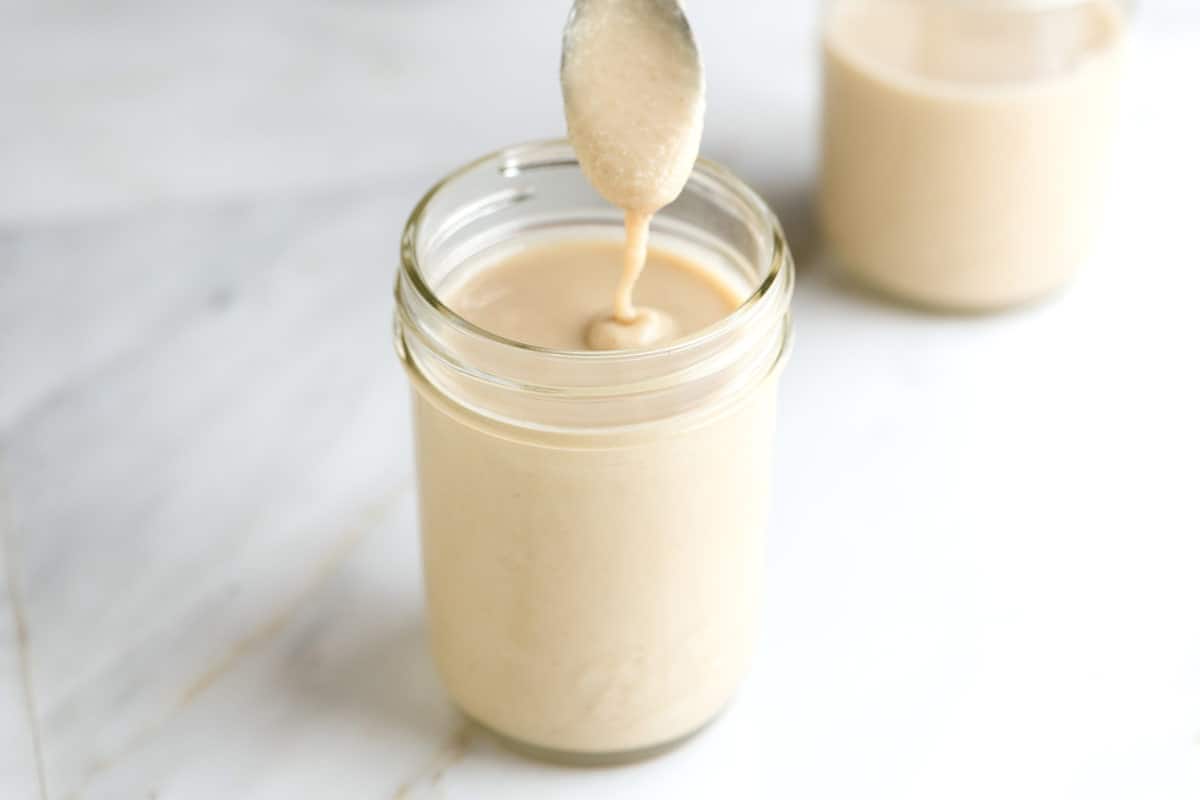
Easy Tahini (Better than Store-Bought)
-
PREP
-
COOK
-
TOTAL
Making tahini at home is easy and cheaper than buying from the store. We recommend looking for sesame seeds in bulk bins or at International, Asian, and Middle Eastern markets for the best deals. While tahini can be made from unhulled, sprouted, and hulled sesame seeds, we prefer hulled seeds for tahini. Tahini can be kept in the refrigerator for a month.
Makes approximately 1/2 Cup
Watch Us Make the Recipe
You Will Need
1 cup (140g) sesame seeds, we prefer hulled
2 to 4 tablespoons neutral flavored oil such as avocado, grape seed, vegetable or a light olive oil
Pinch of salt, optional
Directions
- Toast Sesame Seeds
1Add sesame seeds to a wide, dry saucepan over medium-low heat and toast, stirring constantly until the seeds become fragrant and turn light golden in color, 3 to 5 minutes. Be careful; sesame seeds can burn quickly.
- Make Tahini
1Add the toasted sesame seeds to the bowl of a food processor, then process until a crumbly paste, about 1 minute.
2Add 2 tablespoons of the oil, then process for 2 to 3 minutes more, stopping to scrape the bottom and sides of the food processor a couple of times.
3Check the tahini’s consistency. It should be smooth, not gritty, and should be pourable. You may need to process for another minute and add 1 to 2 more tablespoons of oil.
4Taste the tahini for seasoning, then add salt to taste. Process 5 to 10 seconds to mix.
5Store tahini in an airtight container for one month. It might separate over time like a natural peanut butter would. If this happens, give the tahini a good stir before using it.
Adam and Joanne’s Tips
- Sesame seeds not processing: The sesame seeds take a minute or two to start breaking down (watch our video for reference). If your seeds are just whirling around your processor bowl, you may need a higher-powered processor, or the processor blade may be above the seeds. If you think this is the case, try increasing the sesame seeds in the bowl.
- Nutrition facts: The nutrition facts provided below are estimates. We have used the USDA database to calculate approximate values.
Nutrition Per Serving
Serving Size
1 tablespoon
/
Calories
136
/
Protein
3 g
/
Carbohydrate
5 g
/
Dietary Fiber
3 g
/
Total Sugars
0 g
/
Total Fat
12 g
/
Saturated Fat
2 g
/
Cholesterol
0 mg









